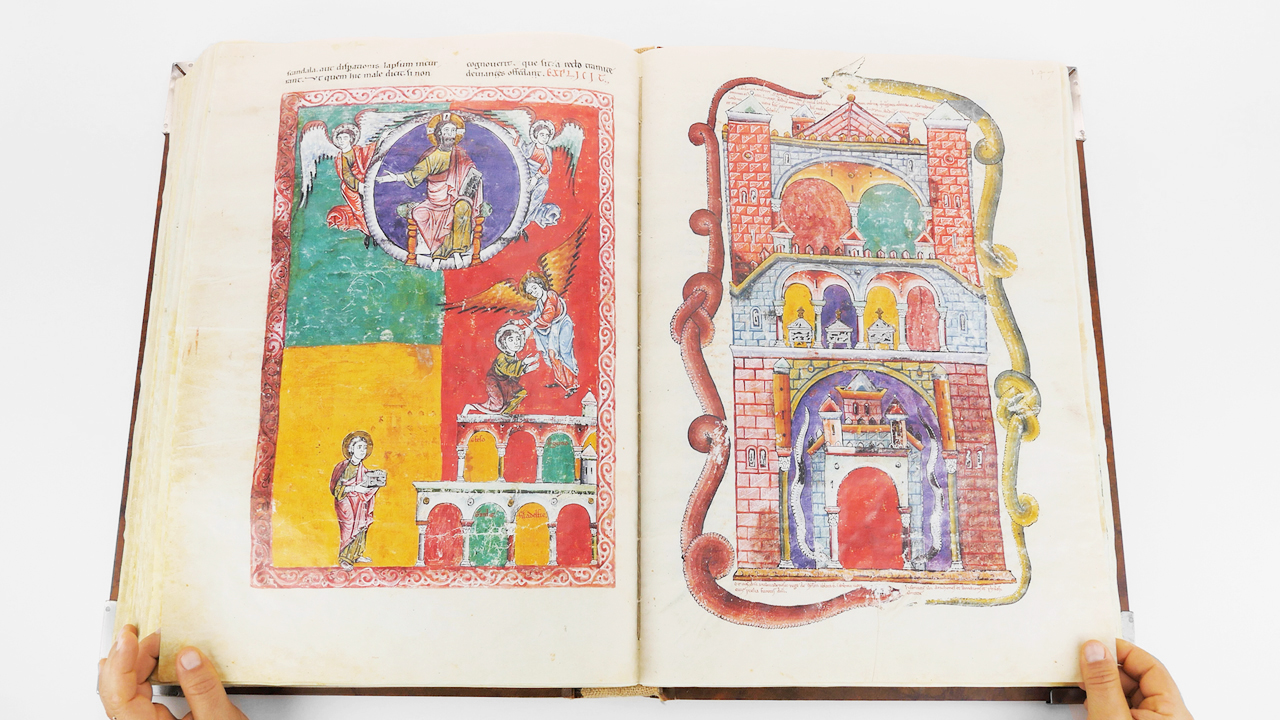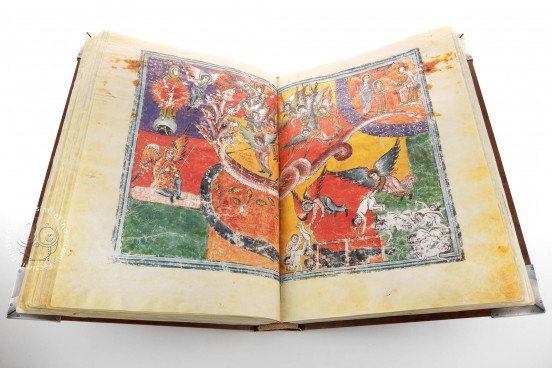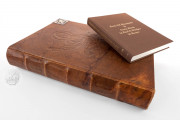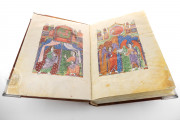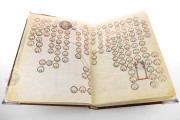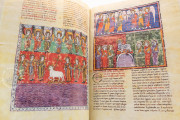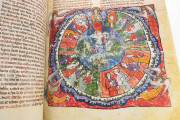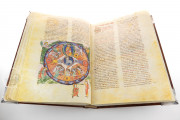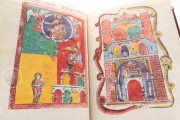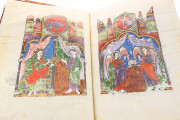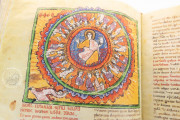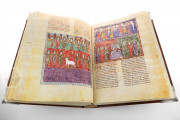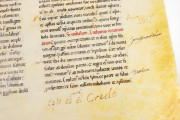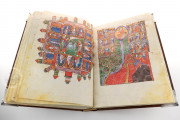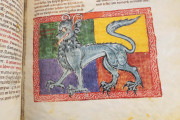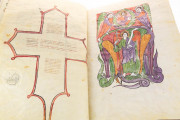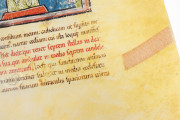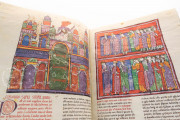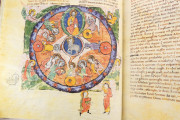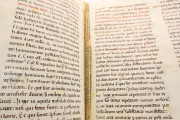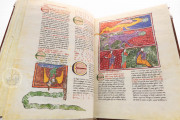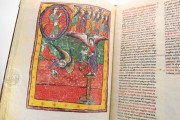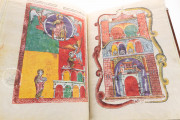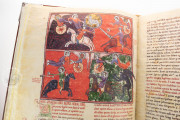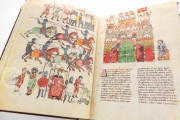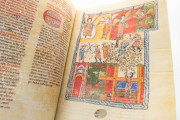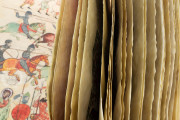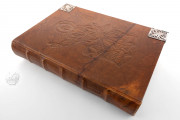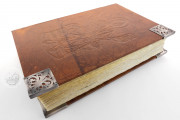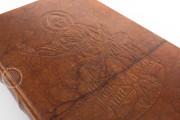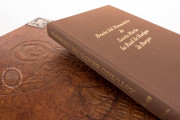The Las Huelgas Codex is the largest surviving manuscript of Beatus of Liébana's commentary on the Christian biblical book of the Apocalypse. Dated 1220, the codex is also one of the latest examples of a long tradition of richly illustrated Beatus manuscripts from the Iberian Peninsula. The manuscript repeats a colophon and a miniature from the earlier Tábara Codex, upon which it was based. The reliance on the earlier manuscript is reflected in the style of its more than ninety miniatures, which heavily evokes its Mozarabic predecessor.
The commentary is divided into sixty-eight sections, each containing a passage from the Apocalypse, an illustration, and an exegesis by Beatus, who relied on earlier theologians, most prominently Ticonius (fourth century). Beatus compiled his commentary around 775, and an illustrated version was established by the end of the tenth century.
The Woman Clothed in Sun
A miniature extending across two facing pages depicts a seven-headed dragon terrorizing a woman clothed in the sun who is about to give birth. Fields of primary and secondary colors divide the space, evoking the elemental and celestial forces described in the text (fols. 101v-102r). Beatus interpreted the perplexing imagery allegorically, with the woman representing the Church.
"Lege et Mira"
A marginal annotation advises lege et mira ("read and wonder"; fol. 83v). This reflects the purpose of the manuscript: to inspire and intensify devotion among its readers. The Cistercian nuns at Las Huelgas comprised the community served by this particular manuscript.
Large Miniatures across Two Columns of Text
The manuscript is written in the Transitional Script of the long twelfth century, punctuated by pen-flourished initials and headings in red. The text is written in two columns, which are interrupted by miniatures that usually extend across both columns. Patterns of wear and marginal notes dating to the seventeenth century reflect the manuscript's continued use over the centuries.
A "Most Generous Lady"
The contemporary colophon refers to a "most generous lady," the donor of the manuscript (fol. 184r). She has been identified with Berengaria (d. 1246), Queen of Castile and Leon, whose parents founded the convent at Las Huelgas. Those who donated lavish gifts to monastic institutions would expect the communities to pray for their souls and those of their families.
After Omega
When the manuscript was rebound in the seventeenth century, the last two leaves were rearranged (fols. 183 and 184). It was likely incorrectly assumed that the large painted letter omega, the last letter of the Greek alphabet, which marks the end of the text, should come after the colophon and miniature copied from the earlier manuscript. That miniature, depicting the scriptorium at Tábara, is extraneous to the Beatus text and thus ought to follow omega.
From Las Huelgas to the Morgan
The exact location of the manuscript's production is unknown, but the artists involved are known to have worked in Toledo and Burgos. The codex was produced for the convent of Santa María la Real de Las Huelgas, where it remained until at least 1770. It is reported to have been at the convent of San Clemente de Toledo before being acquired in 1910 by J. Pierpont Morgan (1837-1913).
We have 1 facsimile edition of the manuscript "Beatus of Liébana - Las Huelgas Codex": Beato del Monasterio de Santa Maria la Real de Huelgas de Burgos facsimile edition, published by Scriptorium, 2004
Request Info / Price
